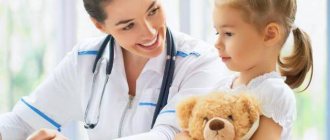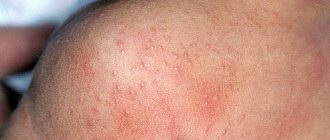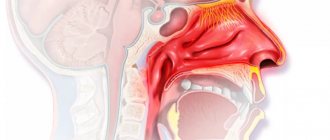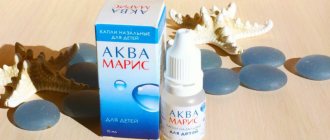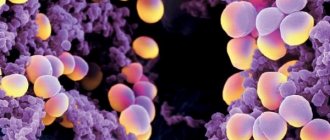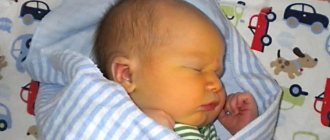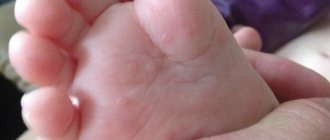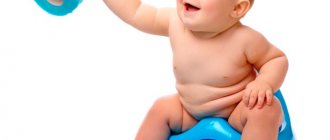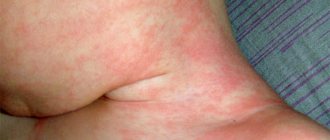Scoliosis in children is a persistent deformity of the spine, which is characterized by lateral deviation and torsion. This disorder is accompanied by asymmetry of the shoulder blades, shoulder girdles and other elements. As the disease progresses, there is a risk of damage to internal organs. To cope with the disease, you need to consult a doctor in a timely manner.
Causes of scoliosis in children
Scoliosis can be either congenital or acquired under the influence of a number of external factors. The main causes of scoliosis in children:
- regular incorrect posture;
- weakness of the muscle corset in the back;
- the bone structure and muscular system are disproportionately developed, which leads to a bias towards one of the systems;
- inadequate physical activity;
- uneven load distribution;
- regularly placing weights in one hand;
- sitting position taken in an anatomically incorrect position;
- vegetative-vascular dystonia;
- deficiency of mineral and vitamin complexes in the body;
- various types of spinal injuries;
- sedentary lifestyle.
All of the above reasons, both individually and especially in combination, lead to the formation of scoliosis in children and adolescents.
Children with scoliosis experience not only physical discomfort, but also psychological discomfort, as they feel inferior and physically unattractive, especially when their health condition is already advanced. Therefore, it is so important not only to carry out the correct treatment, but also to find out the causes of scoliosis and eliminate the negative factors that led to the disease.
It is important to remember that preventing a disease is always much easier than treating it later and getting rid of the consequences. Therefore, preventing scoliosis in children, starting from preschool age, will help solve the problem of deteriorating posture and will not allow scoliosis and more complex health problems to develop. In addition, it will prepare the child’s body for future, more serious stress that awaits the child at school.
Risk factors
In addition to the main causes that cause this disease, there are also additional risk factors.
For example, an infant is most likely to develop scoliosis if both parents suffer from this disease.
In addition, it is boys who are most often susceptible to such changes in posture. Why exactly male representatives more often suffer from problems with the spinal column, doctors cannot answer - but this fact is a reality that exists and which has to be taken into account.
Also, parents of children who have various neurological disorders, rickets and rheumatism need to be especially attentive to the health of their child’s back. Such children have an additional factor for them to develop scoliosis.
Risk factors
Factors that contribute to the development of scoliosis in a child:
- passive lifestyle;
- asthenia;
- excessive physical activity;
- posture disorders;
- formation of the musculoskeletal system lasting up to 18 years.
The gender of the child to a certain extent influences the likely formation of pathology. In boys, deformation and curvature of the spinal column appears much less frequently; girls are more susceptible to the disease. Experts do not have a consensus on what causes this fact, but there is a pattern.
Children who have rheumatism, rickets and certain pathological processes in the central nervous system are significantly susceptible to scoliosis.
The likelihood of spinal curvature in an infant increases when the parents have scoliosis. The disease is not transmitted hereditarily, but certain genetic pathologies can provoke it.
Symptoms of scoliosis depending on age
An attentive parent should watch his child. It is the timely recognition of the first symptoms that will help to effectively cope with the problem. The main symptoms of scoliosis include:
- The child's head is in a lowered position.
- Slouching appears in posture.
- The shoulders begin to come together - wing-shaped shoulder blades form.
- The top line of the shoulders is on the same horizontal line, that is, one shoulder is higher than the other.
All of the above symptoms are just beginning to signal the formation of the disease. When grade 2 scoliosis occurs in children, the following also appear:
- Deterioration of posture – strong changes in the spinal column and the location of the shoulder blades are visually observed.
- Discomfortable sensations in the back area.
- Headache.
- Irregular heart rhythm.
- Uneven breathing and even shortness of breath.
- Impairments of cognitive functions appear - deterioration of memory, attention, information perception, data processing.
Schoolchildren may experience frequent headaches, their psycho-emotional state sharply worsens - this is due to complexes caused by stooping. The same spectrum of symptoms also appears in adolescents. In addition, severe pain begins in the back area.
All symptoms begin to manifest themselves especially clearly with scoliosis of the 2nd degree.
In children under one year old
Moreover, it is worth noting that the youngest children show moodiness caused by headaches. There is a high probability of developmental delay. This is caused by poor circulation, including in the brain.
Scoliosis in infancy up to 3 years
Similar symptoms appear in children under 3 years of age. They may also exhibit instability in posture and gait if the disease is advanced.
Juvenile scoliosis from 3 to 10 years
Juvenile scoliosis begins with headaches. At first they are unstable and appear only periodically. Then they can increase and manifest as dizziness, even vomiting. And in especially severe cases, loss of consciousness may occur.
Juvenile scoliosis from 10 to 20 years
When a child reaches adolescence, the body experiences enormous stress. Hormonal changes occur, and muscle and bone structures actively grow. If at this time the formation of incorrect posture occurs, and later it develops into osteochondrosis, then young people begin to experience a complex of the following symptoms:
- persistent headaches - very often pain is found behind the eye socket;
- general malaise;
- state of chronic fatigue;
- disturbances in the functioning of internal organs, for example, the kidneys begin to work intermittently, the lungs are unable to fully supply the body with oxygen.
Very often, parents perceive a complex of symptoms as general malaise and fatigue from overload at school. This causes the initial stage to be skipped. And the disease manages to reach a serious stage. Therefore, in order to prevent the development of problems with the spine, it is necessary that the daily routine regularly include the prevention of scoliosis in school-age children. It’s even better when the body begins to prepare for future increased stress at the age when the child is a preschooler.
Symptoms
It is quite difficult for parents to detect the symptoms of scoliosis in children at a preliminary stage, due to the fact that initially the pathological process will not manifest itself in any external manifestation and will not cause discomfort to the child. However, timely detection of the disease is possible through periodic implementation of a simple test. A clean carpet is laid on the floor surface, the child lies on his stomach and lowers his arms along the body. If there is no pathology, the line of the spinal column will be smooth and will not have even minor bends to the side.
The following specific symptoms indicate the probable formation of a pathological process:
- slouch;
- asymmetrical position of the hips, shoulder girdle, shoulder blades in a vertical position;
- protrusion of the angle of any shoulder blade when bending forward;
- unequal gaps between the waist and lowered arms;
- deformation in the chest area;
- in a vertical state in a child, when the arms are lowered along the body, one limb is longer than the second.
The presence of one of the above negative manifestations signals to parents that an immediate visit to a specialist is necessary. If the diagnosis is confirmed, therapy should be started without delay, until the disease reaches an advanced stage that is not amenable to conservative treatment.
Which doctor treats spinal curvature in children
As soon as the first signs of scoliosis are detected in children, it is necessary to consult a physician. It is important to remember that timely treatment of childhood scoliosis allows you to completely get rid of the symptoms of the disease.
Describe the full range of existing symptoms and your observations of the child. Most likely, the therapist, after conducting an initial examination and collecting anamnesis, will refer you for additional examinations. Depending on the severity of the disease, this may include a tomography, x-ray, or vascular ultrasound to determine whether there is a change in the velocity of the bloodstream.
It is possible that if there are significant changes in health, the GP will refer the child to an orthopedist. It is this attending physician who specializes in deformities of the osteoarticular apparatus.
If, in addition to changes in posture, there are a number of neurological signs, for example, deterioration of sensations in the skin or parts of the body, then you should also contact a neurologist.
If the disease is advanced and grade 4 scoliosis occurs, you will need to contact a surgeon. If a serious illness has been subjected to surgical intervention, then the help of a rehabilitation specialist will be required to help prevent further back deformities.
It is the correct diagnosis of scoliosis in children that helps to correctly diagnose, determine the stage and prescribe adequate treatment at the moment.
Scoliosis and related diseases
It is important to remember that scoliosis is a progressive disease. If you treat it without due attention, the situation will quickly deteriorate as a result. Scoliosis of the 1st degree in children passes into the second and third stages, causing the occurrence of concomitant diseases.
The main ones include:
- visual impairments such as astigmatism, amblyopia, myopia, which are caused by insufficient oxygen supply to the brain;
- kidney failure caused by poor posture in the upper body;
- vegetative-vascular dystonia due to insufficient lung function;
- malfunctions in the functioning of the cardiovascular system also occur, which can lead to the development of quite serious diseases, such as myocardial hypertrophy;
- osteochondrosis;
- deterioration of the immune system;
- dysbacteriosis;
- ENT diseases - rhinitis, otitis and sinusitis, also caused by oxygen deficiency.
That is why treatment of scoliosis in children must be carried out in a timely manner. It is also important to understand that correcting scoliosis in children will require an integrated approach and a fairly long period of time. But before you begin healing, it is necessary to correctly determine the causes and select treatment in accordance with the factors causing the disease.
What to do if your child has scoliosis
Scoliosis in childhood is currently one of the most common health problems. It is caused by numerous reasons that push the development of the disease. When parents heard the doctor’s disappointing diagnosis of scoliosis, it is necessary to urgently take measures to correct and improve the situation.
The specificity of the disease is that treating scoliosis in children at home is quite feasible. The main thing is that parents follow all the doctor’s recommendations and show persistence and perseverance in the fight against the disease.
After contacting a specialist and clarifying the diagnosis, most likely, depending on the severity of the disease, the doctor will prescribe the following techniques and methods of treatment:
- Massage for back scoliosis in children.
- Gymnastics for scoliosis.
As a rule, these measures are used in the early stages. But it is very important, under no circumstances, to prescribe treatment on your own, as soon as the doctor can tell you what to do if the child has scoliosis. After all, the set of measures depends on the severity of the disease and the presence of concomitant diseases.
Forecast
If scoliosis first appears in a child at the age of 10-12 years, it does not have a very aggressive course. If the symptoms of the pathology were identified before 6 years of age, it may progress. However, doctors say that the development of the disease can be stopped. Children with scoliosis should receive the necessary treatment twice a year.
In addition, the prognosis depends on the degree of deformation. In simple cases, motor activity is retained in full. In more complex situations, the child may experience an imbalance in the torso. In this case, there may be a need to use a walker or cane.
Treatment methods for curvatures
At the moment, there are the following treatment methods that are available at different stages of the disease:
- medicinal;
- massage;
- therapeutic exercises – exercise therapy;
- massage;
- swimming;
- hippotherapy;
- kinesio taping;
- manual therapy;
- osteopathy.
Exercise therapy for scoliosis in children is one of the most effective methods of combating the disease. But it is important that this set of therapeutic exercises be prescribed by a specialist doctor based on the diagnosis.
The main tasks that therapeutic gymnastics solves for children:
- reduces the intensity of the load on the spinal column and allows it to be evenly distributed throughout the body;
- strengthens the muscle corset, which over time begins to independently support the spine in the correct position;
- strengthens ligaments;
- allows you to improve your posture;
- accelerates blood and lymph circulation in the body, thereby enhancing the nutrition of all internal organs and preventing them from suffering from oxygen deficiency;
- the progression of the disease stops;
- general health improves.
This is not all that exercise therapy can do for scoliosis in children. By performing exercises to prevent scoliosis in children, you don’t have to worry about deterioration in posture, and even more so, scoliosis won’t develop.
Therapeutic exercise and gymnastics
Exercises for scoliosis in children must be performed regularly, otherwise there will be no visible and expected effect. The difficulty may also lie in the fact that young children may approach the set of activities irresponsibly. This will reduce the quality of the gymnastics performed, so parents will need to either do exercises together with the baby, or carefully monitor the quality of each movement. It is better if the exercises performed are presented in a playful way.
Exercise therapy is most effective for grade 1 scoliosis in children. At this stage, it is easy to correct all existing deficiencies with posture and stop the development of the disease.
There are conditions for conducting classes. Before you begin therapeutic exercises at home, you should thoroughly ventilate the room. Wear comfortable clothes for the child that will not hinder movement. The total time for performing exercise therapy for children under the age of 6–7 years should not exceed 15 minutes. To make it more interesting for your baby, you should turn on the music, so he will be more active.
For children aged 7 years and older, the total time of physical activity can be increased to 20–30 minutes.
It is important that at any age only the recommended set of exercises for children is used both when correcting posture and when treating scoliosis.
Contraindications to exercise therapy in children with scoliosis
Despite the fact that exercises for grade 1 scoliosis can quickly cope with the disease, there are cases when performing them is strictly not recommended or it is necessary to delay this moment. That is, there are certain contraindications, both permanent and temporary. The main ones include:
- Any inflammatory processes in the body, occurring in both acute and chronic forms.
- The state of the body when there is an exacerbation of any chronic disease in a child.
- Scoliosis develops at a very fast pace.
- Increased body temperature caused by respiratory problems or other types of illnesses.
- Severe headaches of a migraine nature are a temporary contraindication for exercise therapy; you can return to them as soon as the pain is relieved.
- Existing diseases of the cardiovascular system and pathologies of the development of the heart and blood vessels.
- Severe back pain.
- Grades 3 and 4 scoliosis require careful consultation with a medical specialist - exercises in this case can only be done with the permission of a doctor.
Despite the fact that parents may think that the child is ready to perform a set of exercises for scoliosis, they should still consult a doctor. This is due to the fact that many diseases are hidden and cannot be determined independently. Parents may believe that the child has no contraindications, although in fact, he may actually have medical exemptions from performing the exercises. Therefore, it is the specialist doctor who will be able to choose the right exercises for children with scoliosis.
Is it possible to do exercises in the 3rd and 4th stages of scoliosis in a child?
Exercises for scoliosis in children, during stages 3 and 4 of the disease, are usually not performed. Since sudden movements are contraindicated at this stage. They can only aggravate the situation and lead to even greater trauma to already damaged vertebrae.
Massotherapy
In addition to physical therapy, massage is also used for scoliosis in children. It is also a fairly effective remedy for fighting scoliosis and other diseases of the musculoskeletal system.
The main tasks that massage solves:
- accelerates blood circulation, which helps relieve the inflammatory process in muscle tissue;
- by increasing oxygen supply to bone and cartilage structures, metabolism is accelerated, which helps reduce the rate of their degeneration;
- the inflammatory process is eliminated;
- the muscle corset is strengthened, which helps maintain the spinal column in the correct position;
- improved posture;
- strengthening the overall health of the body.
Children's massage for scoliosis can be performed both on the entire surface of the back and on a separate area that requires special attention and elaboration. The effectiveness of this treatment method lies in the fact that massage can be used up to 6 years, or rather, starting from infancy. Of course, the massage should be performed by a specialist. He is the one who knows how to properly influence certain areas in order to achieve the expected effect.
Massage therapists use the following techniques:
- stroking;
- trituration;
- squeezing;
- twisting;
- kneading;
- pat;
- vibrations.
But if it is not possible to visit a specialist regularly, then you can undergo massage training.
Thus, it will be possible to perform a massage course for your child with a certain sequence. To make it easier to understand the techniques and practice massage techniques for grade 1 scoliosis, you can use the video below.
And one more video.
Physiotherapy
When diagnosing scoliosis, the doctor can give the following clinical recommendations for performing physical procedures:
Taking a course of electrophoresis with medications that help dilate blood vessels to improve blood circulation in the affected organs and tissues.
- Ultrasound treatment of affected areas.
- Mud therapy.
- Magnetotherapy.
- Laser therapy.
- Therapy using UVT technology.
- Charcot's method.
- Perform massage movements at home as a strengthening procedure.
Each type of physiotherapy has a positive effect on scoliosis.
Correction with posture correctors
In addition to massage, physical therapy and various physical procedures, it is possible to use posture correctors. They gradually bring the curved area into a more correct anatomical position.
Posture correctors can be used at different stages of the disease. Depending on the severity of the curvature, these can be either elastic corsets or rigid structures, which are used for severe types of curvature. The main task performed by posture correctors is to prevent further curvature of the back. They allow you to gradually fix the correct position and make it natural.
Kinesio taping in the early stages
Kinesio taping for scoliosis in children is another effective way to get rid of this type of disease.
This is due to the specificity of the procedure itself. Tapes or kinesio tapes are special hypoallergenic patches that are glued to certain areas of the back.
This gluing is performed in order to:
- Eliminate muscle strain.
- Move them to the correct position.
- Relieve excess muscle tension.
- Tone overly relaxed muscles.
- Provide proper support to the spinal column.
Taping for scoliosis in children has the following advantages:
- the patch is breathable, which allows the skin to breathe freely under clothing;
- they are not visible, unlike corsets that are worn, so they can be used 24 hours a day under any conditions;
- the price category in which kinesio tapes are located is insignificant, and therefore will not require additional financial costs;
- effective when applied over the next 24 hours;
- provide correct fixation of the muscles, but at the same time, do not limit the child’s movement.
Despite the fact that taping is a very effective procedure, it still has its contraindications:
- Do not apply the patch to the skin if it is injured or irritated.
- If the child suffers from thromboembolism.
- If the child has systemic disorders of the skin.
- If you have cancer of any kind.
- Individual intolerance to the materials from which kinesio tape is made.
It is important for parents to monitor their child. If the tapes are applied correctly, they should not cause an intense feeling of discomfort in the child. Also, after the patches are applied, clothes must be put on very carefully so that the patch does not start to come off.
Using this type of patch, you can restore muscle function in scoliosis. This is very important, as it allows you to keep your back, or rather the spinal column, in the correct position and maintain your posture in this form.
Operational correction methods
It is important to remember that every effort should be made to avoid spine surgery for scoliosis.
Therefore, parents should pay a lot of attention to their children, looking closely at all the minor changes in the body. Even if at first glance they seem insignificant, as a result they can lead to chronic changes and pathological deformations. And this will not only worsen the health condition, but can lead to complete disability of the child.
Surgical intervention is performed only if scoliosis has progressed to the third or fourth stage. Before this, they try to apply and effectively influence the disease with all available conservative methods.
At the moment, the following technologies can be used in spine surgery:
If the curvature of the spine is very pronounced, the surgeon may suggest installing a metal structure in the form of pins to eliminate the defects. Such pins can be made either fixed or movable.
Fixed pins are cheaper and are installed mainly in adults, while movable pin structures are used specifically for children whose spine is still growing and changing.
Movable pin structures allow the spine to grow, as they themselves extend in height, adapting to the growing body. pin structures can be installed using the following methods - Harington, Cotrel-Dubousset, Lucke, Zielke.
It is the surgeon who selects the appropriate technique, in accordance with the health status of the little patient.
But before surgical intervention is performed, the spinal column requires a long period of preparation, which usually takes from 2 to 3 months. During this period, the patient is examined and the areas of the spine that are most affected by the disease are determined.
After the operation there is also a long recovery period. It is advisable that the little patient be observed by a rehabilitation specialist, who will not only allow the back to quickly recover after such a difficult surgical intervention. But also to prevent further changes in posture for the worse.
Hippotherapy
Children with scoliosis can only play sports if they choose certain permitted types of physical activity. One of these types is horse riding, but exclusively for medicinal purposes. Riding a horse for a child with scoliosis under the supervision of a specially trained instructor can have the following positive effects:
- The muscles are symmetrically tensed and, accordingly, strengthened evenly, which allows the back to align.
- Internal organs experience a kind of self-massage, especially those located in the pelvic area. Namely, they suffer the most from scoliosis in a child.
- Limited movements of the spine in the shoulder and pelvic girdle disappear.
- All muscle groups are evenly and balanced involved in the reproduction of movements.
Clinical picture
Most often, idiopathic scoliosis is diagnosed at 6-7 years of age. It is at this time that the first growth spurt is observed. Pathology is detected during a preventive examination. This can be done by an orthopedist or pediatrician. Symptoms of the disease depend on the severity of the curvature:
- First degree pathology can be diagnosed by drooping of the head and pelvic obliquity. Shrugged shoulders are also present. In such children, there is a stoop, the shoulder girdle and waist become asymmetrical. It is also possible to identify the emerging rotation of the vertebrae. The arc of deformation can be identified by bending forward. When the child straightens his body, it disappears.
- The disease of the second degree, in addition to the indicated manifestations, is accompanied by abnormal rotation of the vertebrae. There is also a muscle roll in the lumbar region and bulging in the chest area. These disturbances are observed in the deformation region. The curvature of the spine is preserved in different positions of the body.
- Scoliosis of the third degree is characterized by a strong rotation of the vertebrae. At this stage, a noticeable rib hump appears, and the abdominal muscle tissue weakens. Contractures also occur in the muscles and the rib cages protrude.
- With the development of fourth-degree scoliosis, the spine is seriously deformed and the paravertebral muscles are stretched. At this stage, the costal hump is clearly visible. The muscles and ribs in the concave area are sunken.
The appearance of abnormal processes in scoliosis provokes the occurrence of significant deformation of the chest, which is characterized by compression and displacement of the heart and lungs. There is also a risk of damage to the vascular bundle. This disorder is called scoliotic disease.
Pathology of the first and second degrees is usually not accompanied by any complaints. If there is a violation of the third and fourth degrees, there is a risk of pain in the back, high fatigue, and shortness of breath. There is also a decrease in motor activity, heart pain and tachycardia appear.
If there is no timely and adequate therapy, there is a possibility of vegetative-vascular dystonia, cholecystitis, biliary dyskinesia and other anomalies.
Girls who have scoliosis have a high risk of menstrual irregularities. Subsequently, this is fraught with problems during labor and poses a threat of miscarriage.
Scoliosis is often combined with other lesions of the musculoskeletal system. These include hip dysplasia and flat feet.
Kyphosis may also be observed. This term refers to the curvature of the spine that occurs in the sagittal plane.
Consequences
It is important to remember that scoliosis is not just an aesthetically unattractive back that becomes stooped. This disease entails changes in all internal organs and systems.
Therefore, if a child is not given proper attention from his parents, he runs the risk that his painful condition will develop into a serious illness. Moreover, all internal organs will suffer, leading to their pathological development. This way, the child’s nervous system will gradually begin to deteriorate, leading to many negative consequences. In addition, changes will occur in the cardiovascular system, leading to interruptions in the functioning of the heart. Vision and hearing will deteriorate. Cognitive functions will lag behind in their development compared to children who do not have these back problems.
Therefore, it is so important to prevent the appearance of even scoliotic posture. Moreover, preventive measures are quite simple. Just 15–20 minutes a day is enough, and the muscle frame will be so strong that it will not allow the spinal column to move into an anatomically incorrect position. So it’s worth paying maximum attention to your child’s health - and he will enjoy good health and success in academic sports.
Prevention of scoliosis
In addition to performing physical activity, you can also use proper balanced nutrition to prevent scoliosis. A well-chosen menu, rich in all complexes of micro- and macroelements, as well as vitamins and other useful biological substances, will help maintain health at the proper level. It is necessary to include in the child’s menu:
- sea fish and quality meat;
- raw nuts and valuable vegetable oils, such as flaxseed and olive;
- Be sure to control 3 types of fruits and 3 types of vegetables, both raw and stewed, daily;
- butter and animal fats.
In addition, it is necessary to implement postural hygiene for the child. It lies in the fact that it is necessary to select the right sleeping place for the baby. The mattress should be orthopedic, the pillow should not be small and low, but such that the spinal column is in a horizontal position, preventing the head from being thrown back onto the chest.
In addition, you need to make sure that the child is comfortable sitting while doing homework or just sitting at the table. An important factor influencing posture is the right shoes. Orthopedic - if correction is required or just high-quality shoes with a hard back and the right insole, for a child who does not have orthopedic abnormalities.
It is important to take into account all of the above, since, for example, scoliosis of the first stage, not noticed at early school age, very quickly degenerates into scoliosis of the second degree by the age of 12, that is, by the beginning of puberty. And such deformation is much more difficult to eliminate than at the initial stage of the disease.
Following these simple tips will help maintain your child’s health and prevent the formation of scoliosis.

